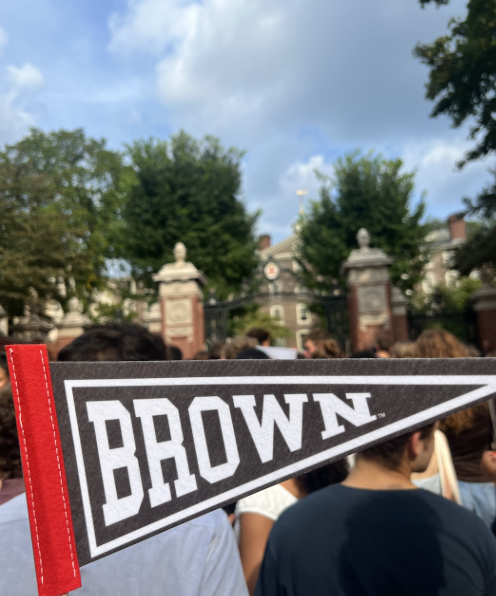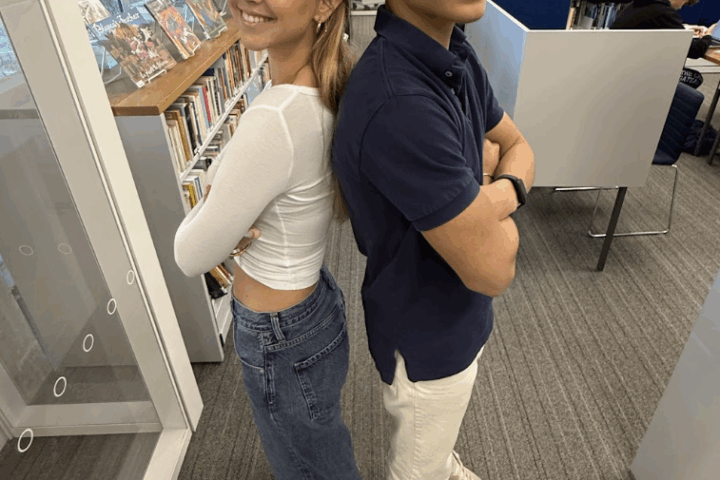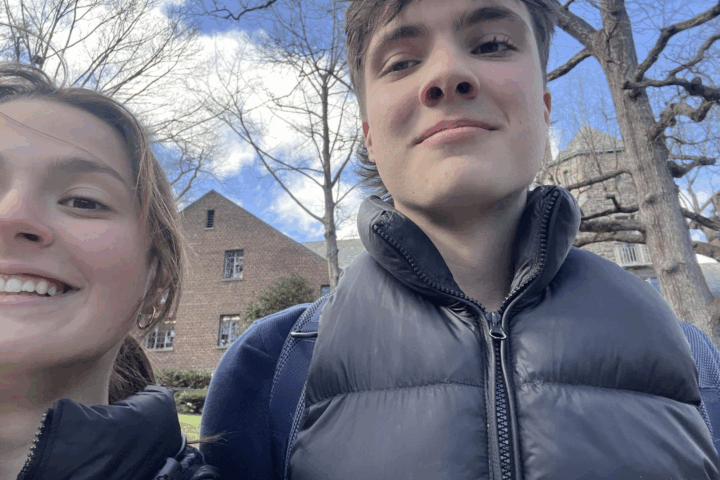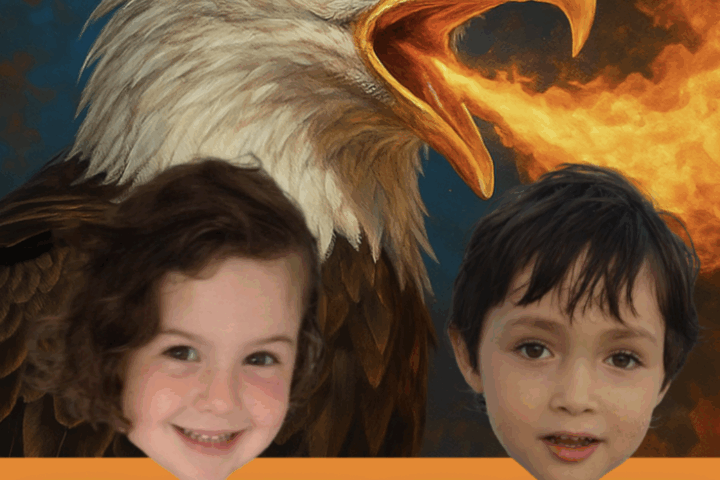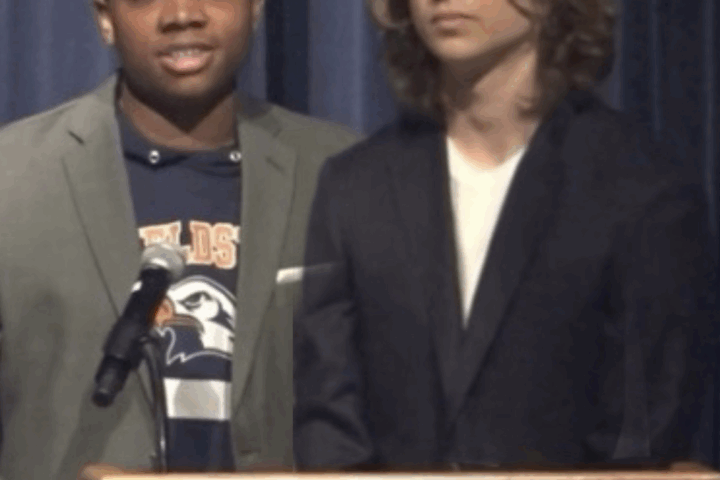In a world where grades often measure academic success, Brown University offers a refreshing alternative: a space where students can focus on growth and intellectual adventure. I spoke to three Fieldston 2023 alumni currently attending Brown to give high school students an inside look at what it’s really like to go to school there. Who better to offer advice than those who have made the same journey from Fieldston?
What is the open curriculum, and what’s it like?
Brown describes its unique open curriculum as the centerpiece of its educational philosophy: “to serve the community, the nation and the world by discovering, communicating and preserving knowledge and understanding in a spirit of free inquiry.” This curriculum permits students to study without course requirements outside their chosen concentration and take unlimited pass/fail classes.
The open curriculum allows students to “try everything and anything,” says Nate Russo ‘23. Russo double concentrates in Economics and Environmental Science and Studies. “It allows for so much exploration and discovery, especially early on in college, that you don’t necessarily get otherwise…I have taken classes I never would have otherwise. How cool is that?! Additionally, this makes for such an interesting student body that has the most unique interests and experience. Today, I met an economics and literary arts double concentrator, and that’s just one specific example.”
Phoebe Chun ‘23, specializing in Art History and Anthropology with an interest in Psychology/Cognitive Neuroscience, said she chose Brown specifically for its open curriculum. The school wants students to “find what they love, and often we can only find those things by taking a leap of faith.”
Francesca Grossberg ‘23, actively experiences the freedom of Brown’s curriculum as a pre-med student majoring in Health and Human Biology. This track is known for being “really stressful and competitive. But that’s not the environment here at Brown. It’s very collaborative.”
Grossberg also highlights the importance of considering what types of students the open curriculum best serves. Because students are not confined by rigid course requirements, “[Brown] wants self-motivated students who want to learn for themselves,” says Grossberg. Russo adds that the open curriculum can be “a little overwhelming because you can truly take anything; there are no guardrails.”
How was the transition from Fieldston to Brown?
Russo believes that Brown and Fieldston have very similar environments. “Brown is a very interdisciplinary place, one of the things I loved about Fieldston as well. I am a proud City Sim alum and Humanities alum, so interdisciplinary learning is one of my favorite environments. Brown has given me even more opportunities to explore those avenues because, after all, life is interdisciplinary.”
Chun added that neither Fieldston nor Brown have GPAs, allowing students to “take risks without fearing grades holding them back.” Additionally, there’s “a similar mantra and goal to help students…there’s a strong sense of collaboration and community at both Fieldston and Brown that often trumps competitiveness, creating safe, encouraging spaces where students feel empowered.”
How was adjusting to college life?
Chun shared that leaving home and the familiar structure of high school is always jarring, no matter what college you attend. “The realization that I would have to fully conduct myself without any rigid guidelines or enforced structure was the biggest challenge and the most valuable lesson” she added.
For Russo, the hardest change was adapting from 18-person seminar-based classes to 400-person lecture classes. The transition to this style of learning can be “startling at first. But, in the end, it’s totally fine.”
Tips for applying to Brown?
“One thing that stood out about Brown’s application was how much they emphasized personality compared to other colleges. They really wanted to understand who you are beyond academics—how you think, what excites you and how you might engage/contribute to the classroom and campus community. If there’s one thing I’ve learned from Brown, they’re looking for students whose achievements are driven by personal motivation and genuine enthusiasm. Being true to yourself is the best way to ensure you attract the right opportunities and environments that are just as authentic as you are.” said Chun.
Russo shared that for his Brown application, he pulled from his experience at Fieldston and other extracurriculars to try to summarize his unique perspective and experience: “I think it’s all about sharing what makes you, you, and why that’s so special!”
Grossberg suggests building strong relationships with your teachers since letters of recommendation are a crucial component of a student’s application. Similar to Chun and Russo, she also emphasizes the importance of extracurriculars, since admissions officers want to see “the authentic you and what you’re really passionate about.”
How would you describe yourself when you were a student at Fieldston?
Russo: I was definitely a dedicated student at Fieldston. My favorite subjects were probably History, Biology and a multitude of arts. I was interested in a smattering of topics, part of the reason I loved interdisciplinary classes, so I explored a lot of different parts of Fieldston academically. Extracurricularly, I was co-president of the Environmental Club at Fieldston, as well as involved with Boy Scouts (I’m not an Eagle Scout) and Science Research. I was and still am very interested in politics as well so a lot of my work outside of school was related to this interest, including working in the Senate over the summer of 2022 and working for Congresswoman Carolyn Maloney on her Congressional Youth Cabinet. I’m also a big cook, so I volunteered on a farm over the summer of 2020 as well as did a lot of cooking and baking in my free time.
Chun: I spent a lot of my time working in the library. I was mostly focused on school, helping out at home and working. The 2D art major program provided an incredible community that let me dive into my passion for art shamelessly because I wasn’t exactly a prodigy. STS was also a significant part of my Fieldston experience—I loved every second of it. I was pretty hyper-focused on the things I was passionate about. While I sometimes wish I had explored a bit more, that focus really shaped my understanding of who I was, who I aspired to be and extended beyond just my identity as a student.
Grossberg: I became pretty involved with The Fieldston News starting my sophomore year of high school, but it wasn’t until Junior year that I devoted a lot of time to it. I started taking Journalism class, which meant I was averaging about one article a week or every other week. By my senior year, I was one of the Editors-in-Chief. I also did Science Research in my sophomore, junior and senior years. Science and Journalism were definitely my primary interests.
What’s the club scene like?
“Brown students are deeply invested in clubs, and community involvement is highly valued here,” said Chun. “I’m part of professional groups like the Pre-Law Society, which helps me gain insight into my future career and connects me with like-minded peers. Affinity groups and wellness/solidarity organizations have also been integral to my experience. I’m involved as a writer and editor for culture and art magazines like the Brown Art Review and Vision magazine, and I’ve dabbled in event management with F@B (Fashion at Brown). My advice is to join many clubs, even if just as a general member. Balancing academics and extracurriculars can be challenging but incredibly enriching and worthwhile.”
Russo added that pre-professional clubs can be a little competitive, as with many universities, because many people want to participate in those activities. “If anything, Brown students are too invested in clubs. I participate in a number of different activities on campus. I am currently Co-President of the Future of Sustainable Investing Conference (FSIcon), which is the largest student-run conference on sustainable finance that brings together industry professionals, policymakers and students from across the country and beyond. This also continues some of the work I did with the Bronx Youth Climate Summit (BYCS) at Fieldston, which is super cool. Additionally, I am an analyst for the Socially Responsible Investment Fund (SRIF) in the healthcare sector. I also volunteer weekly with Brown Market Shares, a CSA program serving the College Hill community. I also assistant-produced the musical Jesus Christ Superstar for the student-run group Musical Forum last spring. I’m also loosely involved with a ton of different fun, interest-based clubs here at Brown, including things like the Cheese Club or Taylor Swift Club. I love being involved with all these different clubs and communities because you meet so many different amazing people with completely different, sometimes overlapping interests,” shares Russo.
As Chun articulated, at Brown, students have “a space to grow both academically and personally–a place to find themselves as much as to find a job.” For those applying, the key takeaway is to be true to yourself—Brown values authenticity and curiosity.
Source: Nate Russo

